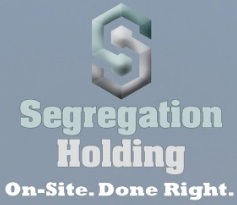Cash Flow Improves with Cost Segregation.
As many of my small business clients know, Section 179 expensing dropped significantly to $25,000 beginning in 2014. Bonus Depreciation expired as well. These deductions were very popular tax strategies increasing cash flow. I always recommended them to my small and midsize business clients. It would allow them to keep more money in their pockets. More money means greater cash flow. With these not being available I have been recommending an old but little known tax strategy – Cost Segregation.
The Basics of Depreciation
Before we get into the details of Cost Segregation, let’s talk about depreciation. Depreciation is an annual income tax deduction. It allows you to deduct the cost or other basis of certain property used in trade or business over the time you use the property. It is an allowance for the wear and tear, deterioration, or obsolescence of the property. Depreciation can occur over 3 – 25 years for tangible personal property (non-structural building components & equipment) or 27.5 – 39 years for real property (buildings). Land is real property but not depreciable.
So…What is Cost Segregation?
Cost segregation is a valuable tax strategy which views real property (land and buildings) used in business or trade not just as a building and land, but also as land improvements and elements of tangible personal property (non-structural building components). The tax advantages and related tax savings come from accelerated depreciation deductions that defer tax and improve cash flow. The result of cost segregation does not mean you are getting any extra depreciation. It means you are speeding it up and receiving it sooner. So, cost segregation equals accelerated depreciation equals improved cash flow.
How to Take Advantage of Cost Segregation & Increase Cash Flow
A cost segregation study must be completed by a reputable engineering or consulting firm in order to find the personal property components of a building. This study will identify certain portions of what would typically be considered part of a building. It then breaks them into tangible personal property assets with shorter depreciable lives of 5 or 7 years. Examples would be carpeting or VCT flooring, millwork, cabinetry, dedicated plumbing/electrical, and more. The depreciation on items such as sidewalks, parking lots, curbs, landscaping, and fencing can be accelerated over 15 years instead of 27.5 or 39 years. These are called land improvements
What to Watch Out For…
As mentioned, this tax strategy only acts to accelerate your depreciation deduction. In the beginning, you are able to take a higher deduction which will reduce your taxable income therefore reducing your taxes. It’s a simple time-value of money. In the future, your deduction will be lower and taxable income more. Also, if you decide to sell an asset for more than its depreciated value you will need to deal with recaptured depreciation – basically the IRS will tax your depreciation “profits” as income. If, however, the sale is structured in the appropriate manner, much of those “profits” can be mitigated.
On another note, with proper planning, business owners and investors can combine Cost Segregation with a 1031 Exchange to maximize their tax benefits. Both of these valuable tax strategies can be used to defer taxes and improve cash-flow. They be done on the same property and on any type of commercial property. Both will require the help of specialists though – an engineering firm for the Cost Segregation study and a Qualified Intermediary for the 1031 Exchange.
Contributed by Roy B. Fisher, CPA
Fisher CPA Firm, PC
832-482-4240
www.FisherCPAFirm.com


